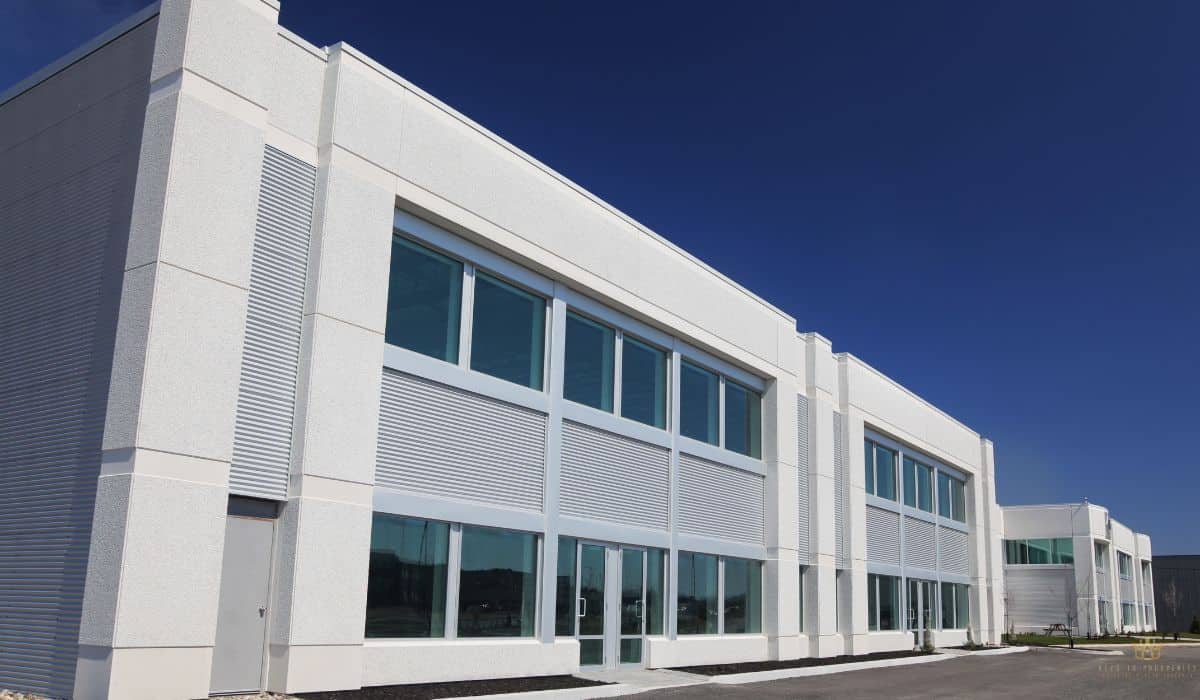Commercial real estate investments can offer impressive returns, often outperforming stocks and bonds over the long run.
In fact, industry experts expect investment property sales to climb by as much as 10% in 2025, particularly in high-demand sectors like industrial and multifamily properties. Not every deal is a good investment, though.
Misjudging property values or miscalculating net operating income can turn a promising opportunity into a costly mistake. That’s why knowing how to analyze a commercial property is essential.
This guide takes the guesswork out of commercial property valuation, walking through a clear, step-by-step approach that works for both first-time buyers and experienced real estate investors.
Ready to make confident investment decisions? Let’s get started.
Short Summary
- Commercial property analysis helps investors assess a property’s financial viability, market position, and potential risks.
- Key valuation methods include income capitalization, sales comparison, and cost approach to determine fair market value.
- Essential steps include gathering property details, analyzing market conditions, calculating financial metrics, inspecting the property, and evaluating risks.
- Understanding cap rates, net operating income, and cash flow projections is crucial for making sound investment decisions.
- A structured approach minimizes risk, improves financing opportunities, and increases long-term profitability.
What Is Commercial Property Analysis?
Commercial property analysis is a structured process used to evaluate an investment’s potential. It helps investors determine if a property is worth the price, how much income it can generate, and whether it aligns with long-term financial goals.
Unlike residential real estate, which focuses on housing costs and market demand from individual buyers, commercial properties are valued based on rental income, operating expenses, and market conditions.
There are three primary methods for commercial real estate valuation:
- Income capitalization approach – Determines value based on net operating income and the capitalization rate (cap rate).
- Sales comparison approach – This compares the property to similar properties that have recently sold.
- Cost approach – Calculates value by assessing the cost of rebuilding the property from scratch, factoring in depreciation.
Key metrics that investors use to evaluate investment property include cash flow, gross rent multiplier, property values, and fair market pricing. Understanding these metrics allows for smarter investment decisions and reduces financial risks.
Reasons You Need To Know How To Analyze Commercial Properties
A poor investment can drain resources, cause financial stress, and make it harder to recover losses. Without a solid analysis, investors risk overpaying, underestimating expenses, or miscalculating a property’s income potential.
A well-structured evaluation prevents costly mistakes and maximizes returns.
Here’s why a thorough analysis matters:
- Avoid overpaying for properties with hidden issues
- Identify undervalued properties with high-income potential
- Secure better financing terms with thorough documentation
- Make data-driven investment decisions instead of emotional ones
- Accurately project future cash flow and returns
- Compare multiple opportunities with objective criteria
Both new and experienced real estate investors benefit from a strong analysis framework. It builds confidence, increases profitability, and ensures that every deal is backed by reliable data.
Step-by-Step Instructions To Analyze A Commercial Property
Successful commercial real estate investing starts with a structured approach. You can’t really rely on guesswork here. It can lead to costly mistakes. A clear analysis framework ensures a well-informed decision.
The five steps below work together to create a complete picture of a property’s value, risks, and potential returns.
Here’s how to analyze a commercial property effectively:
- Gather Essential Property Information – Collect key documents, verify zoning, and assess tax history.
- Conduct Market and Location Analysis – Study local trends, demand, and economic conditions.
- Calculate Financial Metrics and Cash Flow – Evaluate rental income, net operating income, cap rates, and expenses.
- Perform Physical Property Assessment – Inspect the building, assess maintenance costs, and review structural integrity.
- Evaluate Risk Factors and Exit Strategies – Identify potential risks and determine the best time to sell or reposition the asset.
Each step builds on the last, creating a complete and reliable commercial property analysis that eliminates uncertainty.
Want a closer look into effective commercial real estate investing strategies, including detailed analysis techniques? Check out our comprehensive guide on commercial real estate investing strategies.
Step 1: Gather Essential Property Information
Before running numbers or touring a building, start with the basics. A commercial property analysis begins with collecting accurate details about the property itself. This includes physical specifications, financial records, and legal documents that impact ownership and operation.
Key documents to request from sellers:
- Rent roll – Lists current tenants, lease terms, and rental income.
- Operating statements – Shows income, expenses, and cash flow over time.
- Lease agreements – Details tenant responsibilities and rent escalation clauses.
- Property survey and site plans – Outlines boundaries and layout.
- Title report – Confirms legal ownership and any liens on the property.
Zoning laws dictate what a property can legally be used for, so it’s essential to verify zoning regulations before moving forward. Contact the local planning department or use municipal websites to check zoning codes and potential restrictions.
Property tax history provides insight into ongoing costs and potential increases. Local tax assessor websites list property tax assessments, historical rates, and any pending reassessments that could impact future expenses.
Step 2: Conduct Market And Location Analysis
A commercial property’s value isn’t just about the building. It’s also about where it stands. Understanding the local real estate market and economic trends helps investors gauge demand, competition, and long-term appreciation potential.
Researching Local Market Conditions
- Look at vacancy rates to assess tenant demand in the area.
- Analyze job growth, population trends, and economic stability.
- Review planned infrastructure projects or zoning changes that could impact future value.
Tools for Analyzing Comparable Properties
- CoStar and LoopNet provide recent sales data and rental rates.
- County records show past transactions and property tax history.
- Local real estate brokers offer insights on market trends and investor activity.
Evaluating Location Factors
- Accessibility: Is the property near major roads, highways, or public transit?
- Visibility: Will signage and storefront exposure attract customers or tenants?
- Demographics: Does the area align with the property’s target tenants or businesses?
Determining Fair Market Value
To estimate fair market value, compare recent sales of similar properties. Adjust for differences in size, condition, and location to get a realistic price range.
Step 3: Calculate Financial Metrics And Cash Flow
Numbers tell the real story of an investment. A property might look promising, but if the financial metrics don’t add up, it’s not worth the risk.
How To Calculate Net Operating Income (NOI)
NOI is the foundation of commercial property valuation. It’s the difference between a property’s revenue and its operating expenses.
NOI= Gross Rental Income – Operating Expenses
Determining Cap Rate And What It Tells You
Cap rate measures a property’s return relative to its price. A higher cap rate suggests greater risk but also higher potential rewards.
Projecting Rental Income And Vacancy Rates
- Use market rental comps to estimate achievable lease rates.
- Check historical occupancy trends to factor in vacancies.
- Adjust projections for lease escalations or rent-controlled areas.
Analyzing Operating Expenses And Cost Increases
Expenses like maintenance, insurance, and property taxes can eat into profits. Investors should:
- Review historical operating statements for cost patterns.
- Compare costs to similar properties to spot inefficiencies.
- Account for inflation and future capital expenditures.
Computing Gross Rent Multiplier (GRM) And Other Ratios
Another quick valuation method is GRM, which compares price to rental income:
A lower GRM usually signals a better deal, but it should always be analyzed alongside NOI and cap rates for a full picture.
Step 4: Perform Physical Property Assessment
Numbers matter, but so does the physical condition of the property. A thorough inspection helps uncover hidden issues that could turn a promising investment into a money pit.
Creating A Property Inspection Checklist
- Exterior: Check the roof, siding, windows, and foundation for visible damage.
- Interior: Inspect walls, ceilings, and flooring for wear and structural integrity.
- Safety Features: Confirm compliance with fire codes, ADA regulations, and security standards.
Identifying Deferred Maintenance Issues
Some properties come with repair backlogs. Look for:
- Aging HVAC systems or plumbing leaks.
- Structural cracks or uneven flooring.
- Roof damage or signs of water intrusion.
Evaluating Building Systems And Infrastructure
The long-term success of a commercial property depends on functional mechanical systems. Assess the condition of:
- Electrical panels and wiring for outdated components.
- Plumbing and sewer lines to prevent costly replacements.
- HVAC units to gauge efficiency and expected lifespan.
Determining Potential Renovation Costs
Upgrades can boost property value, but unexpected costs can destroy profit margins.
- Get contractor estimates for necessary repairs.
- Compare renovation costs to projected rent increases.
- Prioritize upgrades that improve tenant experience and energy efficiency.
Assessing Property Condition Relative To Competing Properties
Investors must compare the property’s condition with similar listings.
- Is it move-in ready, or does it need major updates?
- How does it stack up against nearby properties in terms of amenities and appearance?
- Will future tenants see it as a better value than competing options?
Step 5: Evaluate Risk Factors And Exit Strategies
Even well-researched investments carry risk. Successful investors anticipate challenges and plan their next move before making a purchase.
Common Risk Factors In Commercial Real Estate Investing
- Market Volatility: Economic downturns can affect property values and tenant demand.
- Interest Rate Changes: Higher rates increase financing costs and lower cash flow.
- Tenant Risk: A single vacancy can disrupt revenue in single-tenant properties.
Methods For Stress-Testing Your Investment Assumptions
No deal is bulletproof. To minimize risk:
- Model different vacancy rate scenarios to see how they impact cash flow.
- Test how rising operating expenses affect net operating income.
- Evaluate worst-case scenarios, such as losing a major tenant.
Developing Multiple Exit Strategies
An investment should always have a backup plan. Consider:
- Holding long-term for appreciation.
- Refinancing to improve cash flow.
- Selling to an investor or owner-occupant when market conditions are favorable.
Planning For Market Fluctuations And Interest Rate Changes
Markets shift. Smart investors plan ahead.
- Monitor economic trends that impact commercial property values.
- Lock in favorable financing terms to hedge against rate hikes.
- Stay flexible and adjust investment strategies as conditions evolve.
Key Considerations For Successfully Analyzing Commercial Properties
A great deal starts with accurate data. Miscalculations or missing information can turn a promising property into a financial headache.
Importance Of Accurate Data in Property Analysis
- Financial Metrics: Incorrect net operating income (NOI) or cap rate calculations can misrepresent an investment’s potential.
- Market Comparisons: Outdated or irrelevant comparable sales lead to misleading valuations.
- Legal Factors: Zoning laws, lease terms, and property tax assessments must be verified.
Common Pitfalls And How To Avoid Them
Even experienced investors make mistakes. Here’s how to stay ahead:
- Don’t overestimate rental income—assume conservative rent growth.
- Always factor in vacancy rates and maintenance costs.
- Verify property condition beyond surface-level inspections.
Why Local Market Knowledge Enhances Analysis Accuracy
- Averages don’t tell the full story. Local trends drive commercial property values.
- Understanding tenant demand ensures better leasing strategies.
- Proximity to new developments or infrastructure projects can impact long-term appreciation.
Taking It To the Next Level: How to Build a Commercial Property Portfolio
Mastering how to analyze a commercial property is just the beginning. Expanding into multiple investments requires strategy.
Leveraging Analysis Skills To Identify Complementary Properties
- Look for properties that align with existing investments. Office buildings near retail hubs, for example.
- Analyze how each property affects portfolio-wide cash flow and risk exposure.
Scaling Your Analysis Process For Multiple Investments
- Standardize financial modeling to compare deals efficiently.
- Use technology to track expenses, revenue, and market trends across multiple properties.
Implementing Portfolio Diversification Strategies
- Mix asset types—multifamily, retail, and industrial properties have different risk profiles.
- Balance short-term cash flow with long-term appreciation potential.
Using Technology And Software to Streamline Analysis
- Commercial real estate software automates valuation models and rent roll analysis.
- Market analytics platforms provide real-time property data.
Alternatives To Traditional Commercial Property Analysis
Not every investor wants to manage physical properties. Fortunately, there are passive options.
Overview Of Real Estate Investment Trusts (REITs) As An Alternative
- Publicly traded REITs offer exposure to commercial real estate without direct ownership.
- Investors earn dividends without handling property management.
Benefits Of Real Estate Crowdfunding Platforms For Passive Investors
- Allows fractional ownership in high-value commercial properties.
- Lower capital requirements compared to traditional real estate investing.
Working With Real Estate Mutual Funds For Indirect Real Estate Investing
- Offers diversification across multiple property types and locations.
- Fund managers handle property selection and risk assessment.
Hiring Real Estate Professionals To Perform Analysis Services
- Appraisers, consultants, and brokers can provide expert insights.
- Saves time for investors focused on multiple acquisitions.
Wrapping Up
Commercial property investing is all about informed decisions. Understanding financial metrics, market trends, and property conditions eliminates guesswork.
Summary Of the Core Analysis Methodology
- Research property details, market conditions, and financial performance.
- Evaluate risk factors and exit strategies before closing a deal.
- Use technology and professional insights to improve accuracy.
Successful commercial property analysis doesn’t mean making perfect predictions. It’s about reducing risk and making informed choices. A solid process helps avoid costly mistakes and spot great opportunities.
Every investment gets easier with practice, and the right approach turns uncertainty into confidence. Ready to take the next step? Explore more insights and investment opportunities on our homepage.
Frequently Asked Questions
What Is The Most Important Factor In Analyzing A Commercial Property?
A property’s net operating income (NOI) is one of the most critical factors. It determines profitability by comparing revenue against expenses, helping investors assess potential returns.
How Do I Determine If A Commercial Property Is A Good Investment?
Compare the cap rate, cash flow, and market trends to similar properties. A strong investment has stable demand, positive cash flow, and potential for appreciation.
What Financial Metrics Should I Calculate When Evaluating A Property?
Key metrics include NOI, cap rate, gross rent multiplier, and cash-on-cash return. These numbers provide insight into profitability, market value, and long-term performance.
How Can I Analyze Market Conditions Before Buying A Commercial Property?
Research local trends, vacancy rates, rental demand, and comparable property sales. Tools like CoStar, LoopNet, and public records help assess the market’s strength.






